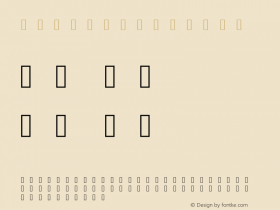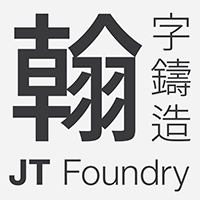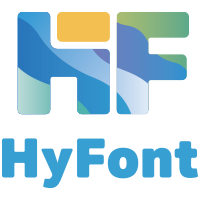Using SING to create gaiji
The number of glyphs that a font can include is limited. For CCJK typesetting, some customers still need specific glyphs that are not included in the font even if the font is bases on a seemingly large character set. The missing glyph problem often occurs when arranging and composing a huge amount historical data. How can we solve this missing glyph problem?
The original method was to simply draw a picture, and then to insert it into the text. The obvious defect is that the layout is awful, and the picture can not be resized accordingly when the font size is changed. Another method is adding the missing glyph into the font using professional font software. It is a good way if you own the copyright of the font, and have the enough experience building fonts.In general, most type vendors do not allow end-user modification of their fonts.
SING (Smart INdependent Glyphlets) technology was developed by Adobe, and is a gaiji solution to solve the missing glyph problem for end users and developers. SING glyhlets can be created based on an installed font. Each SING glyhlet is a small independent file that uses a ".gai" filename extension, and is only a few kilobytes in size.When a glyphlet is used in a document by a SING-savvy application, it is always embedded in that document.
SING technology is built into CCJK versions of the Adobe Creative Suite since CS2. The workflow is as follows:
1. Building SING glyphlets
To satisfy different user requirements, Adobe offers two tools for this, specifically the Glyphlet Creation tool (GCT) and a Glyphlet Development Kit (GDK).
For end users, GCT is used, which is an Adobe Illustrator plug-in. The GCT plug-in is specifically designed to build SING glyphlets, with the obvious added feature to design the glyphs themselves using the strong drawing capabilities of Illustrator, along with access to the glyph outlines of installed fonts.
For font developers, they are expected to start with glyphs prepared by font design applications, and then use tools provided in the GDK to convert the desired glyphs into SING glyphlets. The tools in the GDK supports many font formats, such as TTF, OTF, PFA, PFB, and so on.
Also, SING glyphlets can be created using third-party applications, such as FontLab's SigMaker and Musashi Systems' SINGEdit.
2. Registering glyphlets
The Adobe SING Glyphlet Manager (ASGM) application provides the ability to manage glyphlets. The registration process is simple, and simply involves importing the *.gai files and then refreshing.
3. Inserting glyphlets
SING glyphlets are currently supported by InDesign and InCopy, Version
CS2 and later. SING glyphlets can be inserted via the Glyph Panel.
4. Export and output
The SING glyphlets can be embedded in InDesign documents and when the document is exported to PDF.
|
– – – – – – – – – – – – – – – – – – – – – – – – – – – – – – – – – – – – – – – – – – – – – – – – – – – –
Gaiji (外字): Characters and/or glyphs that are legal,but not in desired font.



































 闽公网安备35010202000240号
闽公网安备35010202000240号